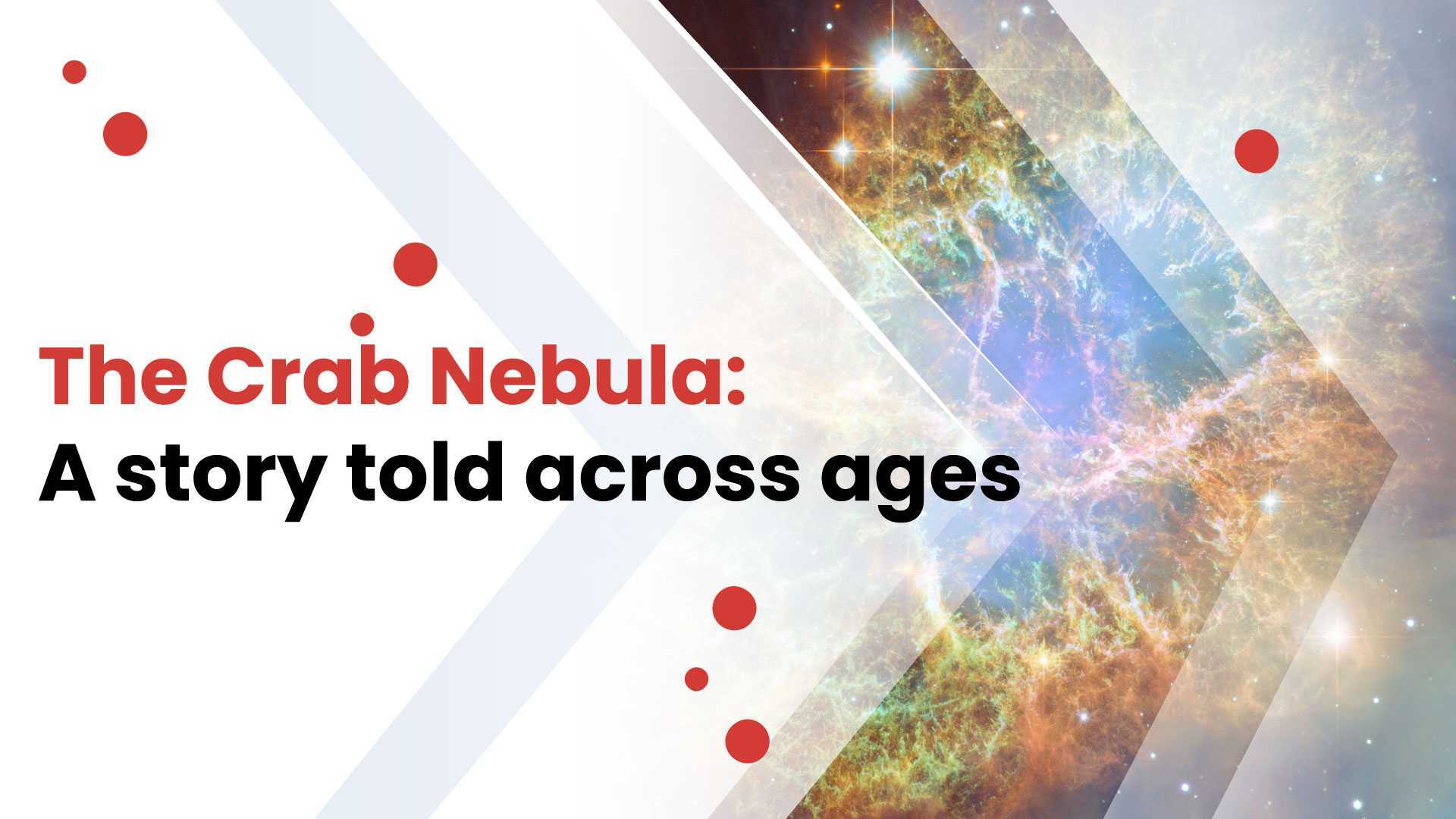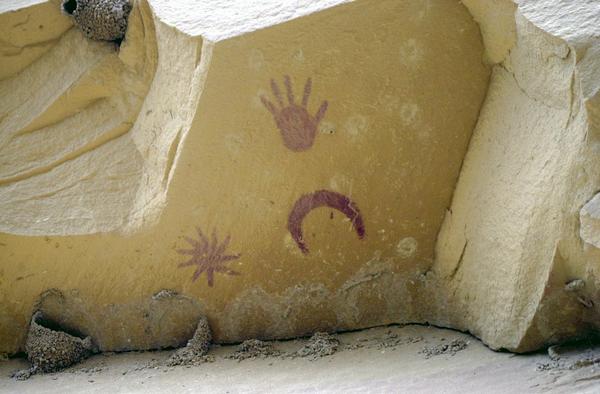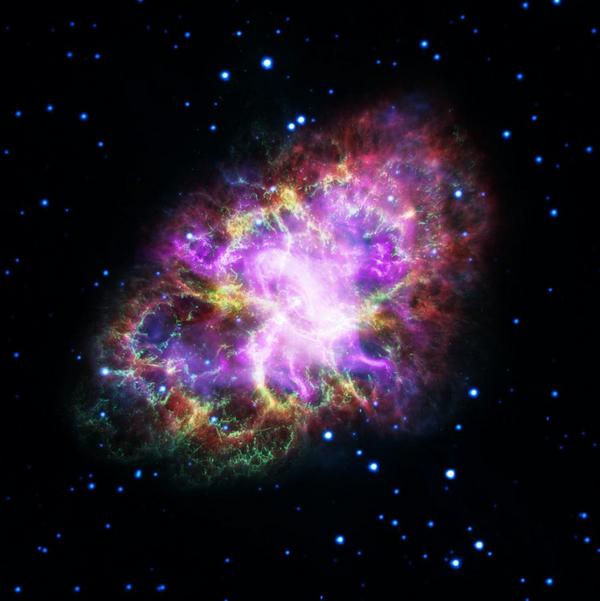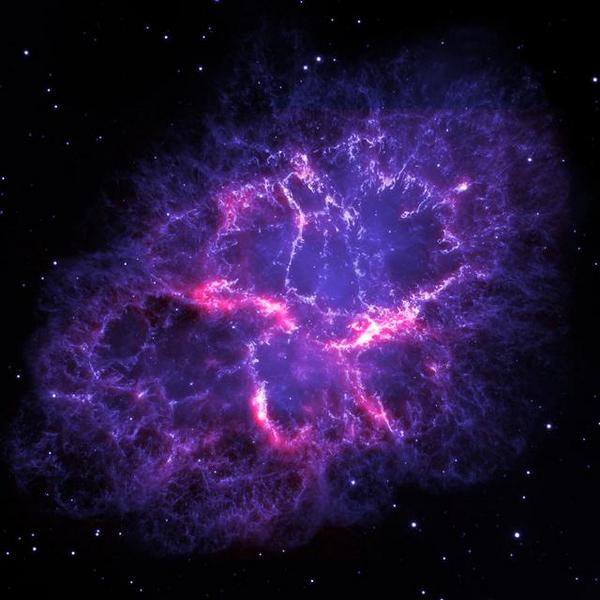Crab Nebula, everything you need to know about it!

The Crab Nebula (Messier 1, M1) is one of the most fascinating objects in the night sky and a milestone in modern astronomy. It is the remnants of a supernova that exploded in 1054 and is located in the constellation of Taurus, approximately 6,500 light-years from Earth. Its name comes from the peculiar shape it adopted in the first sketches made by astronomers in the nineteenth century, who found a resemblance to a crab.
February 6, 2025
The Crab Nebula is one of the most fascinating objects for astronomical observation. Its vibrant colors and enigmatic shape make more than one fall in love with astronomy at first sight.
Today, we will explain everything you need to know about this star formation, from its origin to how to photograph it successfully. Without further ado, let's get started!

The Crab Nebula (Messier 1, M1) is one of the most fascinating objects in the night sky and a milestone in modern astronomy. It is the remnants of a supernova that exploded in 1054 and is located in the constellation of Taurus, approximately 6,500 light-years from Earth. Its name comes from the peculiar shape it adopted in the first sketches made by astronomers in the nineteenth century, who found a resemblance to a crab.
This object is an emission and reflection nebula, which means that it shines both from the light it emits due to the ionization of gases and from the light it reflects from nearby stars. It is composed mainly of hydrogen, helium, oxygen, carbon, and other heavier elements released by the explosion of the progenitor star. The nebula has a diameter of about 11 light-years and continues to expand at a speed of 1,500 km/s, which has allowed astronomers to measure its evolution over time.
Visually, the Crab Nebula features a filamentous structure with a bright central core. Its appearance is due to the different physical processes that occur inside it. The filaments are the remains of the material ejected by the parent star, while the intense energetic emission in the core comes from the Crab pulsar (PSR B0531+21). This compact and highly dense object rotates at a speed of 30 times per second. This pulsar is the stellar remnant of the original star. It is responsible for producing powerful radiation pulses at different wavelengths, from radio waves to X-rays and gamma rays.
The Crab Nebula has become a natural laboratory of astrophysics thanks to modern telescopes. Its dynamic structure and continuous evolution interest amateur and professional astronomers alike. Here, scientists can study the effects of a supernova explosion, the interaction of stellar winds, and high-energy emission processes.

When did the Crab Nebula form?
According to historical records, the Crab Nebula originated from a supernova that exploded on July 4, 1054. This event was so bright that it became the second most luminous star in the sky for several weeks, surpassed only by the Moon and the Sun. It is estimated to reach an apparent magnitude of about -6, meaning it was visible even during the day. It remained an object visible to the naked eye at night for at least 653 days before gradually fading away.
Records of the Chinese Astronomy
Chinese astronomers of the Song Dynasty (960-1279) recorded the event most accurately. In historical documents such as the Wenxian Tongkao, the sudden appearance of a "host star" in the constellation Taurus is mentioned, a designation used to refer to stars that appeared and disappeared, such as novae and supernovae. Records indicate that the star was visible for 23 days in broad daylight and continued to be observable in the night sky for nearly two years.
Some Chinese paintings and star maps of the time depict this event. In certain manuscripts, the "host stars" were depicted as bright symbols in the sky, and in some illustrations, they are shown about the positions of known constellations. It is believed that these drawings not only had an astronomical purpose but were also linked to religious and philosophical beliefs, as the Chinese of the time interpreted these events as celestial omens that influenced the fate of emperors and the changes in dynasties.
Records in the Arab World
Arab astronomers also documented the supernova of 1054. Texts from the time mention the appearance of a "new star" in the sky, although Arabic records are not as detailed as the Chinese. In the medieval Islamic world, sky watching was central to navigation, agriculture, and astrology, so the event was recorded in some astronomical treatises.
Sightings in the Americas
Pre-Columbian civilizations also left evidence of the phenomenon. One of the most significant records is found in the petroglyph of the Anasazi culture, located in Chaco Canyon (New Mexico, USA) and Navajo National Park. In these rock engravings, a drawing depicting a sizable bright circle next to a crescent moon can be seen, which coincides with the position in which the supernova would have appeared about the Moon in July 1054.
On the other hand, the Mayan civilization, recognized for its advanced astronomical observations, may have recorded the event in codices or the layout of some temples. Although no explicit Maya record of the supernova has been found, this culture paid great attention to astronomical phenomena, and it is possible that this event influenced their interpretation of the cosmos.

Importance of Ancient Records in Modern Astronomy
The study of these historical records has been crucial to modern astronomy. Thanks to them, scientists have been able to accurately determine the date of the supernova explosion and use this data to measure the nebula's expansion over time. Comparing ancient descriptions with current observations, it has been confirmed that the Crab Nebula has been growing at approximately 1,500 km/s since the initial explosion.
These records have also reinforced the connection between supernovae and pulsars. The 1968 detection of the Crab pulsar (PSR B0531+21) was direct evidence that supernova explosions leave behind highly energetic neutron stars.
First observations with telescopes
After centuries of oblivion following its brilliant appearance in 1054, the Crab Nebula was rediscovered by modern astronomers in the 18th century. At that time, advances in optics and the manufacture of telescopes allowed the detailed observation of astronomical objects that previously went unnoticed.
John Bevis: The first astronomer to record it
John Bevis, a British astronomer known for his catalog of stars and celestial objects, the Uranographia Britannica, was the first modern astronomer to document the Crab Nebula in 1731. While making observations with his telescope, he noticed a diffuse object in the constellation Taurus that did not match the previously cataloged stars. However, his work did not receive the publicity it deserved at the time, as his atlas was never published due to financial problems.
Charles Messier, the re discoverer
Years later, in 1758, French astronomer Charles Messier rediscovered the same object while searching for comets. Messier, a passionate comet hunter, dedicated himself to recording celestial objects that could be confused with these bodies to avoid errors in his observations. Noticing that this fuzzy spot did not change position over time, he concluded that it was not a comet but a stationary object in the sky.
This discovery made Messier include it as the first object in his famous catalog, Messier 1 (M1). Published in several editions from 1771 onward, this catalog became one of the most important references for amateur and professional astronomers. Although Messier did not fully understand the nature of M1, his contribution was key to future generations' study of it in greater depth.

William Parsons and the origin of the name "Crab Nebula"
The name "Crab Nebula" is due to William Parsons, 3rd Earl of Rosse, who observed it in 1844 using his Leviathan de Birr telescope, the largest of its time. During his observation, Parsons made a detailed sketch of the nebula and noticed that its filamentous structure resembled the legs of a crab. Because of this appearance, he called it "Crab Nebula," a name that still endures.
Parsons' work represented a significant advance in observational astronomy. It made it possible to distinguish the detailed structure of the nebula and suggested that it was not simply a cluster of stars but a more complex phenomenon.
The discovery of its expansion and nature as a supernova remnant
In the late 19th and early 20th centuries, astronomers began to notice that the Crab Nebula was expanding. Astronomer Walter Sydney Adams used spectroscopy to analyze its motion. They determined that the nebula's filaments rapidly moved away from the center, suggesting that it was the remnant of a stellar explosion.
In 1928, Edwin Hubble and other astronomers calculated the speed of expansion of the nebula. They then extrapolated its origin, determining that the explosion that created it occurred around 1054. This coincided with the historical records of Chinese and Arab astronomers, and this coincidence confirmed that M1 was the remnant of the supernova observed nearly 900 years earlier.
Modernity: What the Crab Nebula Looks Like Today
Today, the Crab Nebula remains one of the most studied objects in the sky. Thanks to advances in astronomy and astrophotography, we can compare it with historical records and analyze how it has evolved since it was first observed in 1054.
When the supernova exploded, our ancestors saw it as a bright star. Its intensity was so great that it was visible during the day for almost a month and at night for almost two years. However, today, the nebula is no longer visible to the naked eye and can only be observed with telescopes.
Since its explosion, the nebula has continued to expand at about 1,500 km/s. Its current diameter is about 11 light-years, equivalent to more than 100,000 times the diameter of Earth. Comparing it with records from centuries ago shows its size has increased considerably.
Colors and structure today
The Crab Nebula appears as a diffuse grayish or whitish object through a telescope to the naked eye. The human eye does not perceive colors well in such faint objects. However, it reveals an impressive array of colors and structural details when observed using astrophotography or large-aperture telescopes.
- The red color comes from ionized hydrogen emitting in the Hα line.
- The blue-green color is due to the emission of ionized oxygen (OIII).
- The bright center is caused by high-energy radiation from the Crab pulsar (PSR B0531+21), which emits at wavelengths ranging from radio to X-rays.
Thanks to observations at multiple wavelengths (radio, infrared, visible, ultraviolet, X-rays, and gamma), astronomers have been able to reconstruct its three-dimensional structure and study its evolution in real-time.
Differences between observation and astrophotography
The Crab Nebula is perceived as a diffuse spot with a slight filamentous trace through an optical telescope. However, its complex details and vibrant colors can be captured with long exposure astrophotography.
Today, this object remains a natural laboratory of astrophysics. Scientists can study supernovae, pulsars, and the interaction of the stellar wind with the interstellar medium, thus confirming its importance in modern astronomy.

How to observe the Crab Nebula (M1)
The Crab Nebula is a fascinating target for both visual observation and astrophotography. However, its low brightness requires certain conditions and suitable equipment to appreciate its splendor.
Location in the sky
The Crab Nebula is located in the constellation of Taurus, near the star Zeta Tauri, which marks one of the bull's horns in celestial mythology. Its position is ideal for observing between October and March when it is highest in the night sky.
The exact coordinates of the nebula are:
- Right ascent: 05h 34m 31.97s
- Declination: +22° 00' 52.1"
A good reference point is Orion. From the famous constellation, a line can be drawn to Aldebaran and Zeta Tauri, where M1 is about 1.2 degrees northwest.
Visual Observation
With small telescopes (4 to 6 inches aperture), the nebula appears as a diffuse, faint blob without much detail. ISome filamentous structures and uneven brightness may be noticed in dark skies and with larger apertures (8 to 12 inches),
To improve visibility, specialized filters can be used, such as:
- UHC (Ultra High Contrast) Filter: Improves contrast and reduces light pollution.
- OIII Filter: Highlights ionized oxygen emissions, highlighting structural details.
Astrophotography of the Crab Nebula
To capture the beauty of M1 in astrophotography, it is advisable to follow these steps:
Recommended equipment:
- Telescope: Preferably a reflector of 200 mm (8") or more aperture with a good focal ratio (f/4 to f/6).
- Camera: CCD or CMOS with high sensitivity, although modified DSLR cameras can also work.
- Motorized equatorial mount: Necessary for long exposures without the stars appearing as strokes.
Suitable filters:
- Hα (Hydrogen alpha): Highlights the filaments of ionized gas.
- OIII (Oxygen III): Improves contrasts in the nebula.
- RGB or Broadband Filters: To capture the natural colors of the nebula.
Exposure times:
- Individual exposures of 3 to 5 minutes, with a total integration time of 3 to 5 hours for optimal detail.
Image processing:
- Use of software such as PixInsight, DeepSkyStacker, or Photoshop to stack images and enhance details.
The Crab Nebula is a bridge between the past and the future of astronomy. From the ancient Chinese, Arab, and American astronomers who recorded it to modern telescopes revealing its complex structure, this object has allowed us to understand the life cycle of stars and the evolution of the cosmos.
Observing it today, with our eyes or through astrophotography, connects us to centuries of exploration. Its beauty and colors inspire wonder. Capture its light, explore the universe, and marvel at the sky's mysteries.